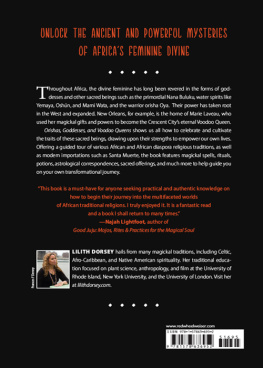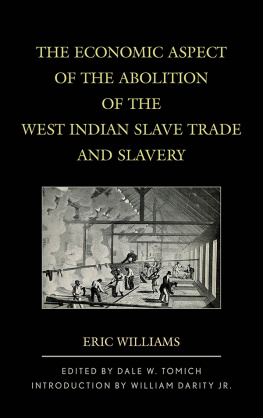Sacred Texts African
VOODOOS AND OBEAHS
Phases of West India Witchcraft
BY
JOSEPH J. WILLIAMS, S.J.
[1932, Copyright lapsed by non-renewal]
This companion book to Psychic Phenomena of Jamaica goes into much greater depth as to the New World-African connection, and adds more material about Afro-Carribean religion in Haiti. The primary strength of this work is the careful documentation of the history and ethnography of Vodun. Williams includes numerous quotes from rare documents and books on the subject. The weakness is the lack of detailed information about the religious system of Vodun, which we now know to be as complicated (or more so) than any of the major religions. There is scarcely any mention of the loas, the pantheon of Vodun Gods and Goddesses, and he misses the importance of possession during the religious ceremonies. However, all things considered, this is required reading if you want to understand the background of Haitian and Jamaican Vodun, and the profound influence of imperialism, slavery and racism on its development.jbh.
VOODOOS AND OBEAHS
Phases of West India Witchcraft
BY
JOSEPH J. WILLIAMS, S.J.
Ph.D. (Ethnol.), Litt.D.
Fellow of the Royal Society of Arts; Fellow of the Royal Geographical and the American Geographical Societies; Honorary Member of the Socit Acadmique Internationale (Paris) Member of the International Institute of African Languages and Cultures (London); Member of the Catholic Anthropological Conference; Member of the American Folk-lore Society; etc.
Author of Hebrewisms of West Africa,
Whence the Black Irish of Jamaica,
Whisperings of the Caribbean, etc.
LINCOLN MAC VEAGH
DIAL PRESS INC.
NEW YORK MCMXXXII
{p. iv}
COPYRIGHT, 1932, BY JOSEPH J. WILLIAMS
{copyright lapsed due to non-renewal}
{scanned at sacred-texts.com, August 2001}
First printing December, 1932
Second printing January, 1933
MANUFACTURED IN THE UNITED STATES OF AMERICA
BY THE VAIL-BALLOU PRESS, INC., BINGHAMTON, N. Y.
{p. v}
INTRODUCTION
The NEW YORK TIMES of August 14, 1925, printed the following news item:SEIZE PRICE LISTS OF VOODOO DOCTOR POLICE GET CIRCULARS OFFERING WISHING DUST AND LUCKY CHARMS TO NEGROES AT $1 TO $1,000. Special to the New York Times.-ATLANTIC CITY, Aug. 13.Twelve thousand circulars said to have been sent to this city by a New York voodoo doctor were seized by the police here today as they were being distributed to negro homes on the north side by six negro boys.
The circulars bore the address of D. Alexander of 99 Downing Street, Brooklyn, N. Y.
All sorts of love powders, wishing dust, lucky charms and incantations are offered for sale in the circular, with prices ranging from $1 to $1,000.
Guffer Dust, New Moon, No. 1, good, $50; Happy Dust, $40; Black Cats Ankle Dust, $500; Black Cats Wishbone, $1,000; King Solomons Marrow, $1,000; Easy Life Powder $100; Tying Down Goods, $50; Chasing Away Goods, $50; Boss Fix Powders, $15, and Buzzard Nest, $100, were some of the goods offered.
Inquiry developed that Bringing Back Powders were designed to return an errant wife or husband to a grieving spouse, Tying Down Goods were said to keep the subject of ones affections from departing, while Chasing Away Goods had the opposite effect. Boss Fix Powders keep ones employer in a friendly mind.
Four days after the appearance of the foregoing in The Times, we find this despatch from Cuba on the first page of The BOSTON POST:
SAVE CHILD FROM TORTURE RESCUED DURING VOODOO DEATH RITESHAVANA , Aug. 17.Paula Cejes, a three-year-old white girl, was saved from a horrible death at the hands,
{p. vi}
of Voodoo worshippers at Aguacate, Havana Province, today, due to the rapidity of a search after she had disappeared.
Paula, who lives with her parents on the Averhoff sugar plantation, was enticed away by Voodoo worshippers who bound and gagged her in a cane field and were in the act of performing their rites when a posse of searchers came upon them.
Rural guards later captured a white man and a colored man who had in their possession articles used by voodooists in sacrificing life.
It may have been items such as these that inspired William Buchler Seabrook to go to Haiti with the set purpose of learning first hand whatever he could of Voodoo and kindred practices. At all events, after some stay in the island, he published in 1929 The Magic Island which at once became the centre of heated controversy. To some it was a weird conglomeration of fact and fancy worthy of little serious consideration and of even less credibility.[1]
On the other hand, the usually conservative LITERARY DIGEST[2] apparently accepted it in its entirety as historic fact, and without question or cavil devoted five entire pages almost entirely to excerpts from its more startling passages and the reproduction of
[1. Note:Magic Island was unquestionably received with fulsome praise by reviewers generally. Thus THE BOOKMAN, February 1929, p. 68: It has been a long time since a volume has held my attention so completely as W. B. Seabrooks Magic Island. It is not a twice told tale but a vivid record of things seen. The NEW YORK HERALD-TRIBUNE, January 8, 1929: Here in its own field is the book of the year. The NEW YORK EVENING POST, January 12, 1929, calls it a sensational vivid and immensely important book. To the OUTLOOK, January 9, 1929: It is a prize among travel books. While the SATURDAY REVIEW, February 23, 1929, declares: Mr. Seabrook has done justice to this remarkable subject not only in investigating the system, but in presenting the results of his work.
The more thoughtful reviews, however, refuse to be entirely carried away by the general acclaim, and modify their praise with almost hesitant reserve. Thus the YALE REVIEW, Autumn, 1929, p. 185, makes the restriction: He spoils much of his material by his exaggerated style and his dubious psychology. The AMERICAN JOURNAL OF SOCIOLOGY, September, 1929, p. 316, insists: He has written as an artist, not as an ethnologist. And the NATION, February 13, 1929, p. 198, urges: It is time for a tempered intelligent presentation on the manner in which they live, one that staying close to facts, probing under the surface, and eschewing rumors, will make quite as fascinating a tale.
We may be pardoned, then, if we seem to delay too long on Mr. Seabrook and his sensational book, but we must risk the criticism in the interest of fair play as regards Haiti and the popular estimate of Voodoo.
2. February 23, 1929, p. 35 ff.]
{p. vii}
several photographs. One single reference to the element of the occult which Mr Seabrook seems to believe is the nearest approach to a guarded caution about the actuality of the most improbable details, a few of which may be mentioned in passing,
Thus, for example, at the blood baptism, a truly voodooistic rite, when the author was to receive the ouanga packet prepared for him by Maman Clie, after the preliminary sacrifice of two red cocks and two black, an enormous white turkey and a pair of doves, in due course the sacrificial goat was led forth. He was a sturdy brown young goat, with big, blue, terrified, almost human eyes, eyes which seemed not only terrified but aware and wondering. At first he bleated and struggled, for the odor of blood was in the air, but finally he stood quiet, though still wide-eyed, while red silken ribbons were twined in his little horns, his little hoofs anointed with wine and sweet-scented oils, and an old woman who had come from far over the mountain for this her brief part in the long ceremony sat down before him and crooned to him alone a song which might have been a babys lullaby.[3]

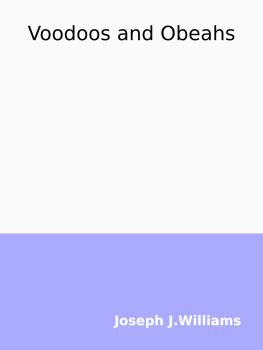

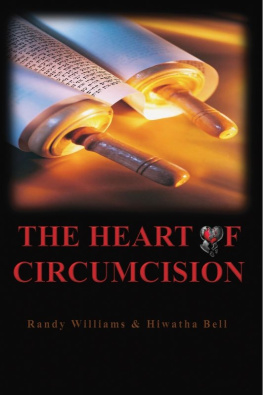
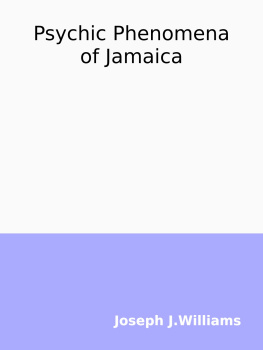
![Florin Curta (editor) - Great Events in Religion [3 volumes]: An Encyclopedia of Pivotal Events in Religious History](/uploads/posts/book/295713/thumbs/florin-curta-editor-great-events-in-religion-3.jpg)
